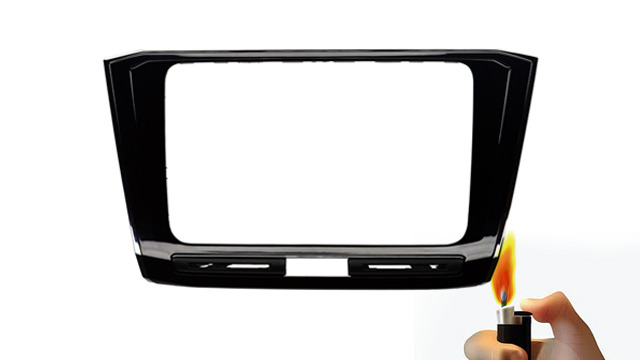+86 187 1857 3593
+86 187 1857 3593
Nov. 13, 2024
As a leading supplier in the automotive electronics industry, Dingei Industry (Shenzhen) Co., Ltd. understands the importance of high-quality plastic housings in car radios and car stereos. The right material ensures longevity, visual appeal, and resilience in demanding automotive environments. This guide details practical methods to evaluate plastic quality for car radios and stereos, helping manufacturers and suppliers meet high standards. Read on to learn about key assessment techniques or contact us today to learn how Dingpei Industry can provide the premium car radio and car stereo housing solutions your business needs.

One of the easiest ways to assess the quality of plastic housings for car radios or stereos is through a careful visual inspection. At Dingpei Industry, we ensure our plastic materials meet high standards of consistency, gloss, and scratch resistance.
- Crystalline Plastics: Typically semi-transparent or milky, these materials are known for durability and rigidity, making them ideal for high-use products like car stereos.
- Amorphous Plastics: These fully transparent materials are preferred for their clarity, offering a sleek aesthetic. However, amorphous plastics may require extra reinforcement for high-impact uses.
Quality plastics exhibit smooth, scratch-resistant surfaces and uniform coloring—essential qualities for car radios and stereos. At Dingpei Industry, we take pride in selecting materials that provide both durability and visual appeal for car electronics.
To ensure durability, testing the physical properties of plastic housings is essential. Here are key tests that Dingpei Industry performs on every product:
- Bending Test: Bending the plastic frame assesses flexibility and resilience. High-grade plastics retain shape and avoid cracks or deformation, ensuring they endure daily automotive use.
- Elasticity Test: Stretching and compressing the material demonstrates rebound speed and elasticity, critical for housings that must withstand regular handling.
- Abrasion Resistance Test: Premium materials display minimal wear after abrasion, ensuring a long-lasting appearance. Our car radio and stereo housings pass these tests to guarantee a product that looks great for years.
Chemical resistance is crucial in automotive electronics. Here are some chemical tests that reveal a material’s resilience:
- Alcohol Test: By soaking the plastic in alcohol, we check for chemical stability. Plastics like polyethylene may dissolve, while more resistant materials like polystyrene are unaffected.
- Solvent Test: Exposure to various solvents reveals any swelling, softening, or color change, indicating durability in different environments.
- Burning Test: Burning a small sample reveals flame color, smoke, and melting characteristics. Polyethylene and polypropylene drip, while polystyrene emits black smoke. This confirms the polymer type and its suitability for car radio and stereo products.
Our advanced testing procedures at Dingpei Industry provide deeper insights into plastic quality:
- Infrared Spectroscopy (IR): Infrared absorption spectra reveal each plastic’s unique composition, ensuring we use materials that meet automotive industry standards.
- Differential Scanning Calorimetry (DSC): This test measures melting points and crystallization temperatures, helping us choose materials that withstand extreme temperatures inside vehicles.
Other valuable tests for assessing plastic quality include:
- Density Test: Density measurements give a rough indication of plastic type. At Dingpei Industry, we ensure each material meets density requirements for long-lasting performance.
- Flame Color and Smoke Observation: Burning plastic yields distinct flame colors, odors, and smoke. For instance, polyolefin materials burn with a blue flame, giving off a mild smell and white smoke, which helps verify material type for reliable car stereo applications.
Investing in quality plastic ensures safety, durability, and customer satisfaction. At Dingpei Industry (Shenzhen) Co., Ltd., we take pride in our commitment to superior materials that provide long-lasting, visually appealing, and resilient car stereo and radio housings. Inferior plastics degrade faster, often leading to dissatisfaction. By using top-quality materials, we help manufacturers create products that stand up to heat, UV exposure, and the challenges of automotive environments.
If you’re looking for reliable, high-grade plastic housings for your car radio or car stereo products, contact Dingpei Industry today. Let us show you how our expertise can bring value to your automotive electronics lineup.
Previous: How to Effectively Analyze, Acquire, and Serve Car Radio Clients as a Leading Car Audio Manufacturer
Next: The Complete Guide to Automotive Navigation Products by Leading Car Radio Manufacturer

Address
Building E, Shangshui Cultural Park, Longgang Dist., Shenzhen, China
CUSTOMER SERVICE
+86 187 1857 3593
REQUEST A QUOTE